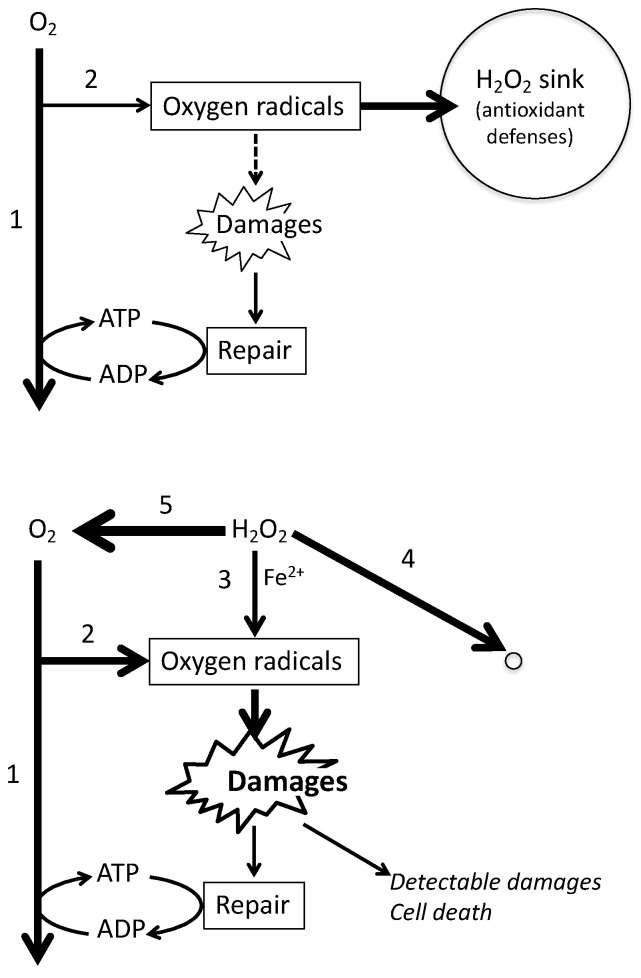Figure 9.
Scenario for H2O2 mediated oxidative damage. Top: normal cellular physiology, endogenous oxygen metabolism is essentially devoted to mitochondrial ATP generation (1). This and other oxygen using enzymes generate oxygen radicals (2) and a vast majority is eliminated by antioxidant defenses. Some oxidative damages (Damages) occur and cellular bioenergetics contributes to their reparation resulting in a steady state with no accumulation of oxidative lesions. Bottom: addition of H2O2 (high µM) has three immediate consequences: it increases the probability of Fenton’s reaction (3), H2O2 reacts within seconds with existing reactive molecules and annihilates the existing antioxidant defenses (4), and H2O2 concentration drops abruptly through action of cellular catalase. This increases greatly the intracellular O2 concentration (5) and hence endogenous oxygen radicals production (2). On one side oxygen radical generation is increased (2 and 3) and on the other side antioxidant defenses are invalidated (4). This is expected to generate oxidative damages at rates exceeding repair: they accumulate and become detectable and may result in cell death.

